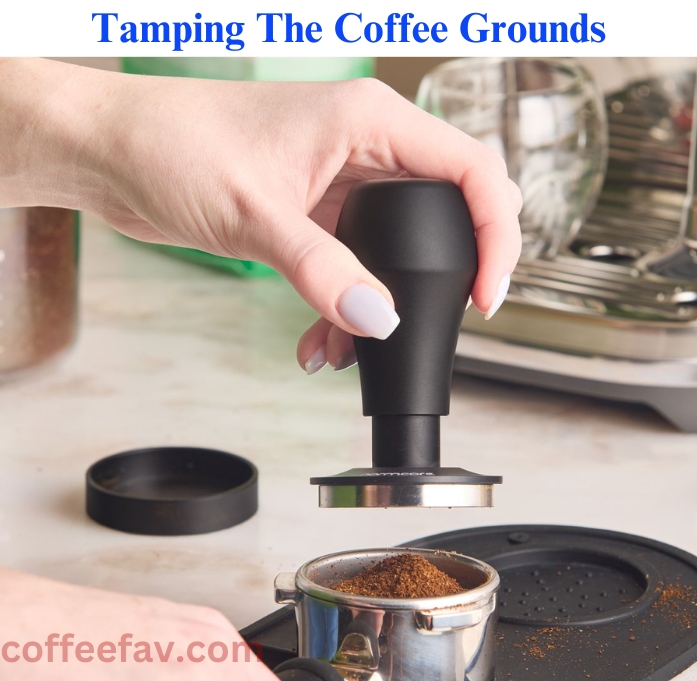How to Use an Espresso Machine

If you are a coffee lover or just want to make cafe-style drinks in your own kitchen, you need to know how to use an espresso machine properly. Making a perfect cup of espresso coffee can be rich and complex for some coffee lovers. It is the foundation of many popular coffee drinks, including lattes, cappuccinos, and macchiatos. This article will help you to understand these processes with step-by-step guidelines, from setting up your machine to pulling the perfect shot and even frothing milk.
Parts of Your Espresso Machine
Before making espresso coffee, you have to familiarise yourself with your coffee machine, where there are work many types of essential components. Such as:
- Portafilter: It holds the coffee grounds during the extraction process and attaches to the machine.
- Group Head: It dispenses hot water into the portafilter.
- Steam Wand: It is used to froth and steam the milk.
- Water Reservoir: It stores water for brewing.
- Pressure Gauge: Some machines include this feature to display the brewing pressure.
- Boiler: It is used to heat the water for brewing and steaming.
- Pump: It creates pressure and forces water through coffee grounds.
Types of Espresso Machines
There are many types of espresso coffee machines. Each kind of machine comes with different automation features, like:
- Manual Espresso Machines: Usually, it requires full control over pressure and the extraction process.
- Semi-Automatic Machines: They give control over grind size and tamping but automate water pressure.
- Fully Automatic Machines: They manage the entire brewing process at the press of a button.
- Super-Automatic Machines: These kinds of machines include built-in grinders and milk frothing systems.
Essential Tools and Materials
To make the perfect cup of espresso, you will need some tools and materials, like:
- Fresh coffee beans (espresso roast is recommended)
- A high-quality coffee grinder
- A tamper
- A filter basket
- Clean, filtered water
How to Use an Espresso Machine
To get the best output from your espresso maker, you need to follow some steps.
Step 1: Preparing Your Espresso Machine
To get the best flavorful espresso coffee, you should start with a properly prepared machine.
- Fill the Water Reservoir: The component of the machine that contains water is called the reservoir. Your machine should have a reservoir that is clearly marked, with lines displaying how much to fill it for a single or double shot. Some espresso makers may include a built-in filter, but if you would like, you can use filtered water.
- Pre-heat the Machine: To pre-heat your machine, turn on your machine and allow it to heat up for about 10–15 minutes. This ensures consistent brewing temperature.
- Preheat Your Cup and Portafilter: Run hot water through the portafilter and into your cup to warm them up. That will help you to maintain the espresso temperature.
Step 2: Grinding and Measuring Your Coffee
- Choose Fresh Coffee Beans: Select and use high-quality, freshly roasted espresso beans for the best flavor.
- Grind to the Right Consistency: A fine grind size is the ideal size for espresso, similar to table salt. The water will pass by too quickly if the grind is excessively coarse. If it is too fine, it will lead to over-extraction and bitterness.
- Measure the Right Dose: Some machines use 18–20 grams of coffee for a double shot. You can use a digital scale for precision.
Step 3: Tamping the Coffee Grounds
- Use a Tamper: Place the tamper on top of the coffee grounds in the portafilter and apply firm, even pressure. To produce a level piece of compacted ground, press evenly and firmly. Remove any extra coffee grinds from the edge.
- Check for Level Grounds: Ensure the coffee bed is even and compacted. The water can flow if the coffee bed is uneven, with over-extraction of the grounds that come into contact with the water and under-extraction of the rest.

Step 4: Brewing the Espresso
- Lock the Portafilter into the Group Head: Secure the portafilter into the group head, twist it to lock, and place it below the group head. The portafilter must be secured into position to help create the barrier that is essential to the high-pressure extraction procedure. The particular process will be based on your model.
- Start the Extraction: Now, press the brew button to begin. A perfect shot may take 25-30 seconds to extract and yield about 1.5 ounces for a single shot or 2 ounces for a double shot. A large number of semi-automatic espresso makers automate this step, which means that all you need to do is choose how many shots you want and enjoy while the machine makes your coffee.
- Observe the Crema: Crema is the golden layer of foam on the top level of the espresso, indicating a well-extracted shot.
Step 5: Frothing Milk (Optional for Lattes & Cappuccinos)
If you want to make a coffee with steamed or frothed milk-based espresso drinks, you will need to froth milk.
- Fill a Pitcher with Cold Milk and Remove the Steam Wand: You can use whole milk for a creamy texture or skim milk for more foam. Now, you can select the steam mode if applicable until the desired amount of foam or milk temperature is reached.
- Froth the Milk: Keep the steam wand just below the surface to create microfoam. To distribute the air evenly, give the pitcher an initial twist. Heat the milk to about 150°F (65°C).
- Pour the Milk: For a latte or cappuccino, twist the milk pitcher carefully and pour it into the espresso.

Step 6: Dial or Setting in the Espresso
To create the ideal shot, you could be able to change a few things depending on your espresso maker. The process of “dialing in” involves changing the grind size and quantity, extraction duration, and other elements to suit your preferences. Although you can change almost every element with a manual espresso machine, it does require some expertise and experience. You can customize the flavor profile of a semi-automatic espresso machine by adjusting the amount of coffee, the size of the grind, the tamping, and other settings. Though an automatic or super-automatic espresso maker may not give you much time to adjust the settings, it usually produces excellent outcomes every time.
Conclusion
Firstly, learning how to use an espresso machine may seem irresistible, but if you practice day by day, you will be able to brew rich, glorious, and flavorful espresso shots like a professional. By following these guidelines, you can consistently make a great cup of espresso coffee and enjoy the full experience of making your own coffee drinks at home.
FAQs
How long does it take to make espresso?
The extraction itself takes around 25–30 seconds, but the full process (grinding, tamping, brewing) can take 2–5 minutes.
Can I use regular coffee beans for espresso?
Yes, but using espresso roast beans is recommended as they are designed specifically for espresso brewing.
Why does my espresso taste bitter?
Bitterness is usually caused by over-extraction, which can occur from using too fine a grind or allowing the espresso to brew for too long.
Do I need a separate grinder for my espresso machine?
Yes, a burr grinder is essential for consistent, high-quality grounds that will result in a better espresso.


Pingback: How to Choose Perfect Coffee Beans: Expert Guide (2025)